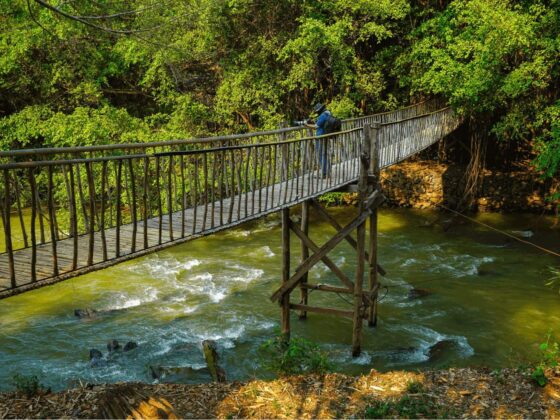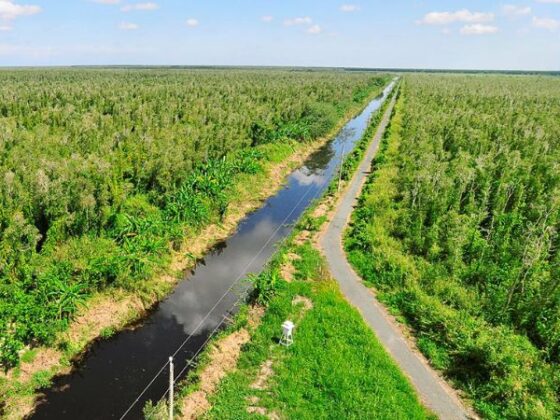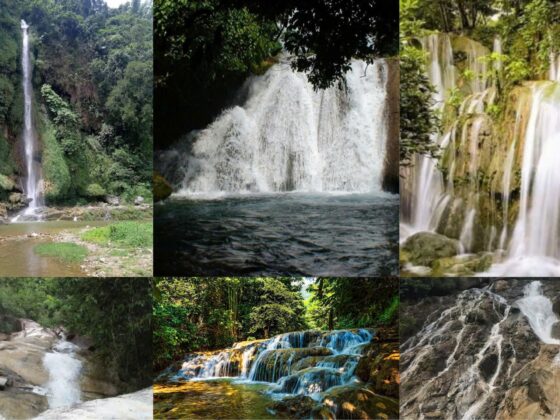Table of Contents Show
The forest at dawn is a place of promise. The night chorus of frogs fades, mist clings low across the Đồng Nai River, and the air hangs heavy with the smell of wet leaves. In Nam Cát Tiên, one of Vietnam’s great lowland jungles, the reward for rising early, the very heart of the Nam Cát Tiên gibbon watching experience comes not in sights first, but in sound.
Read more interesting posts here:
- Market Trails: A Trekker’s Journey to the Vibrant Bắc Hà Sunday Market
- Lảo Thẩn Mountain Trek: Conquer the Untamed Dragon’s Spine
- Salt and Silence: A Guide to Côn Đảo National Park Trekking
The Dawn trek: The start of your Nam Cát Tiên gibbon watching adventure

At 5 AM, the guides led us quietly down the trail, our headlamps bobbing like will-o’-the-wisps in the dark. The air was thick with humidity, every step sinking slightly into damp earth. We perched on a clearing near the canopy and waited, sipping tea that tasted faintly of smoke. Then it began: a low whoop, rising in pitch, followed by an echoing cascade. Within minutes, the entire forest trembled with the song of gibbons, a highlight of our Nam Cát Tiên gibbon watching experience.
The Gibbon’s song: The heart of the experience
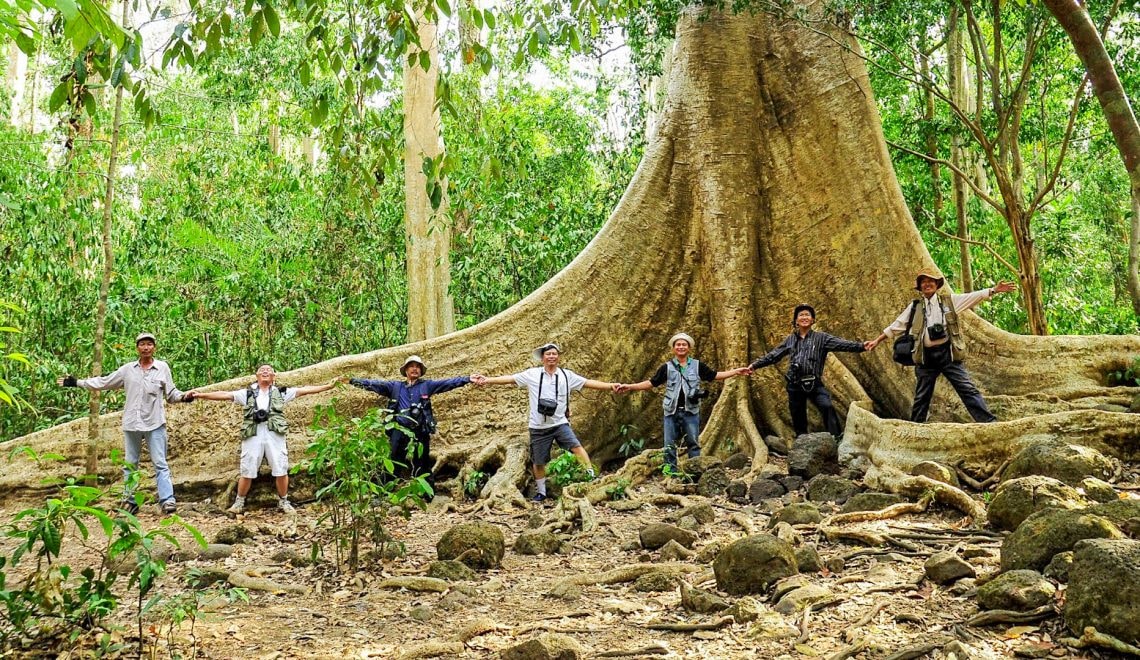
The calls are unlike anything else — part song, part prayer, part declaration. They carry across valleys, building into a chorus that feels ancient and wild. As I sat there, sweat cooling on my skin, I felt less like a visitor and more like a witness to a ritual older than memory, the heart of Nam Cát Tiên gibbon watching.
Physically, the trek into Nam Cát Tiên is not difficult — gentle trails wind through towering hardwoods and bamboo thickets. But the real test is patience. Leeches are common in the wet undergrowth, humidity soaks you through before sunrise, and silence requires discipline. Yet the reward is worth it: not just the chance to hear the gibbons, but to see them.
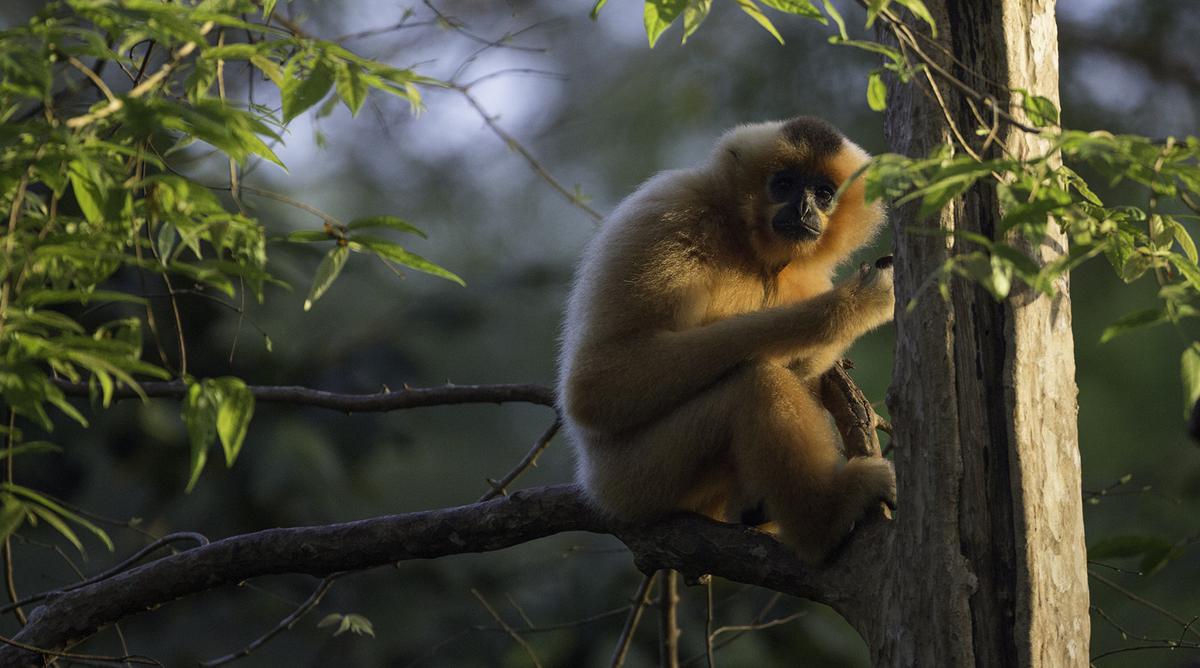
That morning, a family appeared high in the canopy — long arms swinging, golden fur catching the first rays of light. They moved effortlessly, pausing to survey the forest, before vanishing into the green. Our guide smiled softly and explained that in local Ma folklore, gibbons are forest guardians, their dawn calls ensuring balance between humans, animals, and spirits. “When they sing,” he said, “the forest wakes,” a perfect moment for Nam Cát Tiên gibbon watching.
Planning Your Nam Cát Tiên Gibbon Watching Trip

Nam Cát Tiên is about 150 kilometers from Hồ Chí Minh City, making it one of the most accessible jungle adventures for travelers who don’t have weeks to spare. The best experiences come from staying overnight inside the park, where simple lodges and camps give you access to early morning treks, perfect for Nam Cát Tiên gibbon watching, before day-trippers arrive. Long sleeves and tucked-in socks help with leeches; a pair of binoculars makes the canopy come alive.
Later, as we returned to camp, we passed farmers on bicycles heading into cassava fields, children waving from the roadside, and a small stall selling sticky rice wrapped in banana leaves. The transition from jungle to village was seamless, as if both belonged to the same story. And in truth, they do — a perfect end to a day of Nam Cát Tiên gibbon watching.
When I think back on Nam Cát Tiên, it isn’t the sweat, the mosquitoes, or even the sight of the gibbons that lingers most. It’s the sound — the wild, resonant calls that filled the forest at dawn, a highlight of Nam Cát Tiên gibbon watching. The reminder that the world holds music we rarely hear, if only we rise early enough to listen.
Conclusion
In the end, a Nam Cát Tiên gibbon watching journey is an experience that stays with you long after you’ve left the jungle. It isn’t the sweat, the mosquitoes, or even the fleeting sight of the gibbons that lingers most. It’s the sound — the wild, resonant calls that filled the forest at dawn. It’s a powerful reminder that the world holds music we rarely hear, if only we rise early enough to listen.
Ready to discover your own trail tale? Join our community of explorers in the ExoTrails Facebook Group and follow the ExoTrails Fanpage for daily inspiration and trail tips!
FAQs
What is the main attraction of a dawn trek in Nam Cát Tiên National Park?
The primary attraction is the incredible opportunity to hear and potentially see gibbons. At dawn, these primates engage in a powerful, echoing chorus that fills the forest, offering a truly unique wildlife experience.
How far is Nam Cát Tiên National Park from Ho Chi Minh City?
Nam Cát Tiên National Park is located approximately 150 kilometers from Ho Chi Minh City, making it one of the most accessible major jungle adventures for travelers based in or visiting the city.
What kind of physical challenge does a Nam Cát Tiên trek present?
While the trails are generally gentle, the trek can be physically demanding due to high humidity, damp terrain, and the presence of leeches. Patience and endurance are key, but it’s not considered a technically difficult climb.
How can I best prepare for leeches during a jungle trek in Nam Cát Tiên?
To minimize leech encounters, wear long sleeves and tuck your pants into your socks. Leech-resistant gaiters are highly recommended. Local guides can also provide tips for quickly dislodging any leeches you might find.
What is the significance of gibbons in local Ma folklore?
In local Ma folklore, gibbons are revered as forest guardians. Their dawn calls are believed to symbolize the waking of the forest and help maintain the balance between humans, animals, and spirits.
Is it better to stay overnight in Nam Cát Tiên National Park or do a day trip?
For the best experience, especially for gibbon watching, staying overnight inside the park at simple lodges or camps is highly recommended. This allows you to join early morning treks before other day-trippers arrive.
What other wildlife might I encounter in Nam Cát Tiên National Park?
Beyond gibbons, Nam Cát Tiên is home to various other species, including many bird species, deer, wild boar, and the critically endangered Siamese crocodile.



